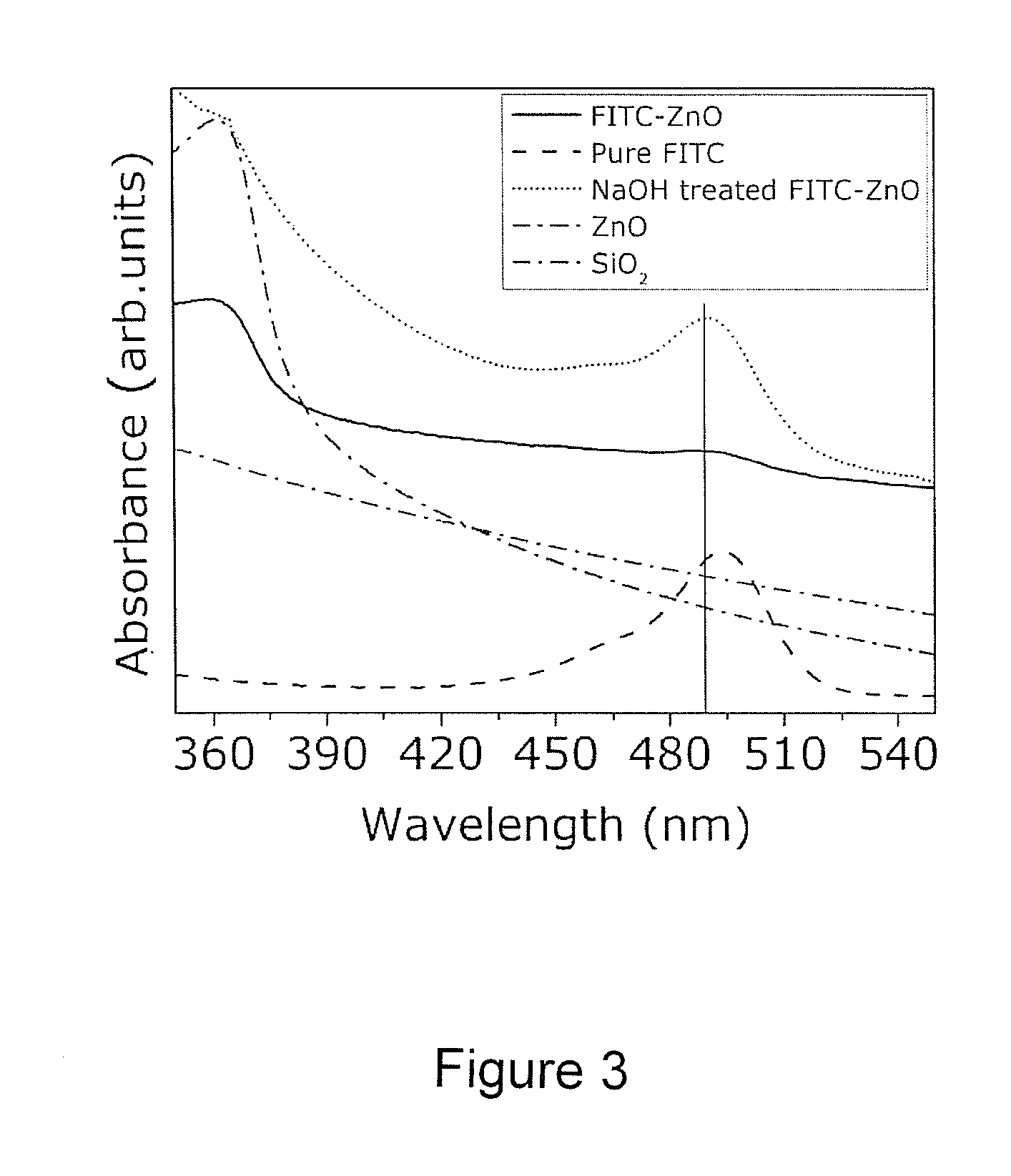FLUORESCENT PARTICLES COMPRISING NANOSCALE ZnO LAYER AND EXHIBITING CELL-SPECIFIC TOXICITY
a fluorescent dye and nanoparticle technology, applied in the field of new compositions of matter, can solve the problems of reduced dye performance, lack of cell specificity of conventional chemotherapeutic drugs or hyperthermia methods, and insufficient understanding of the detailed mechanism of toxicity and their selective nature to different biological systems. excellent
- Summary
- Abstract
- Description
- Claims
- Application Information
AI Technical Summary
Benefits of technology
Problems solved by technology
Method used
Image
Examples
Embodiment Construction
[0020]Referring to the figures, there are shown some, but not the only, embodiments of the invented ZnO-encapsulated fluorescent dye particles, preferably FITC-ZnO particles. In the description that follows are some, but not the only, invented methods of making and using said ZnO-encapsulated fluorescent dye particles.
Experimental Section
Synthesis of FITC-ZnO Particles.
[0021]FITC-ZnO particles were synthesized by forced hydrolysis and condensation of FITC-binding silane and silicate to obtain the FITC-SiO2 core, followed by the formation of ZnO surface layer using zinc salt. In a typical synthesis, 10 mg (0.026 mmol) of FITC was dissolved in 3.0 mL ethanol by stirring for 20 min, followed by the addition of 20 μL (0.085 mmol) of vacuum-distilled (3-aminopropyl)-trimethoxysilane (APTMS). The reaction continued for 24 h under stirring in the dark. The amino group of the APTMS reacts with the isothiocyanate group of FITC to form N-1-(3-triethoxysilylpropyl)-N′-fluoresceyl thiourea, and...
PUM
 Login to View More
Login to View More Abstract
Description
Claims
Application Information
 Login to View More
Login to View More - R&D
- Intellectual Property
- Life Sciences
- Materials
- Tech Scout
- Unparalleled Data Quality
- Higher Quality Content
- 60% Fewer Hallucinations
Browse by: Latest US Patents, China's latest patents, Technical Efficacy Thesaurus, Application Domain, Technology Topic, Popular Technical Reports.
© 2025 PatSnap. All rights reserved.Legal|Privacy policy|Modern Slavery Act Transparency Statement|Sitemap|About US| Contact US: help@patsnap.com



